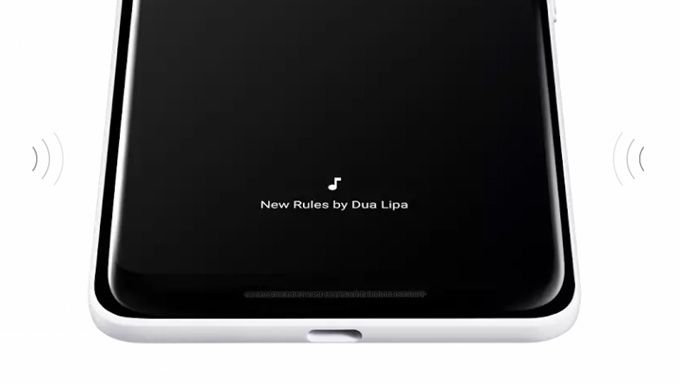Earlier this month Google officially launched the Pixel 2 and the Pixel 2 XL which ship with a new feature known as "Now Playing". The feature listens for music in the background and if it recognizes one of the songs, it shows you the name and the artist on the lock screen. When the feature was initially announced, there wasn't much information publicly available about it. Today, though, we have more details about how exactly the exclusive Now Playing feature works on the Google Pixel 2 and Pixel 2 XL smartphones.
We initially thought that the Now Playing feature utilized a technology called "AmbientSense" to detect and inform the user of what song is currently being played. This suspicion derived from the package name of the Pixel Ambient Services application that was pre-installed on the Verizon Google Pixel 2 models. Since the name of the pre-installed APK in /system/priv-app was called "AmbientSense" and details about the technology seemed to match up, we felt this was a fair assumption. However, Google reached out and told us that the Now Playing feature is not based on that technology.
We followed up on Google's statement to us for more details on Now Playing. A Google spokesperson later reached out to us with additional details on the feature, stating that the offline song recognition database contains a list of songs in the 10s of thousands, though they did not give an exact figure but promised it was in the higher end. This means that the database we pulled from a Verizon Pixel 2 model does not represent all of the songs that the Now Playing feature can recognize.
We further learned from our contact that the Now Playing feature is only activated when it hears music. If the Pixel 2 detects music being played (using a combination of software, hardware, and machine learning), it will then look up the audio fingerprint in the database residing on the phone then show you the song name or artist. This database, by the way, is updated with music each week and is based on the most popular songs from the Google Play Music catalog. It is also localized according to market, thus, the database is not personalized to the user's Google Play Music account.
VentureBeat reached out to Google independently to learn some additional details about the Now Playing feature. The audio sampling occurs once every 60 seconds in an attempt to save battery life (as opposed to running all the time) and as a result you will sometimes see the song that was played last still on the screen. They also learned that the database update only occurs over WiFi and only replaces the outdated parts of your regional-specific database.

